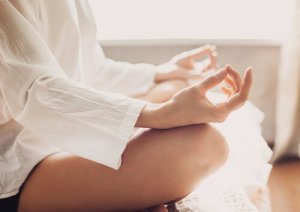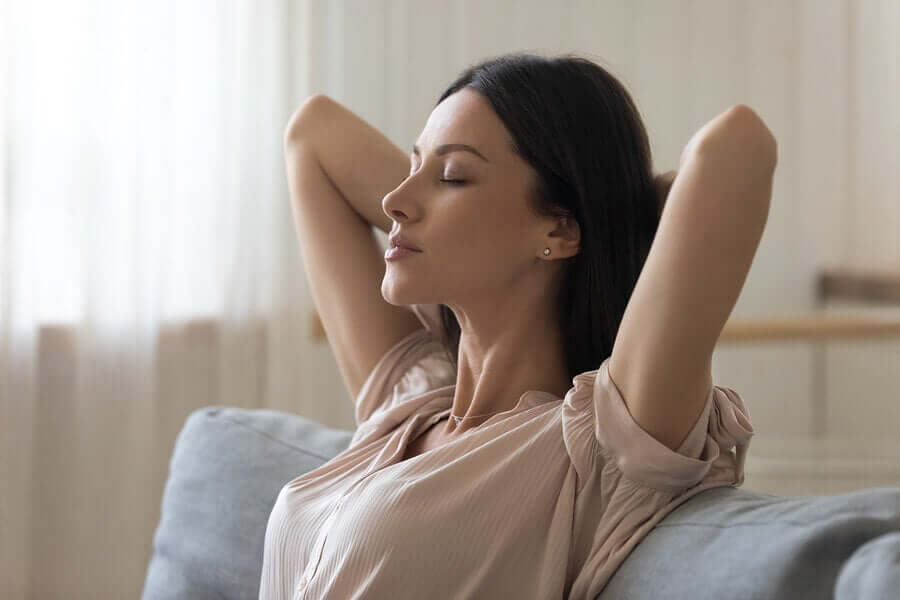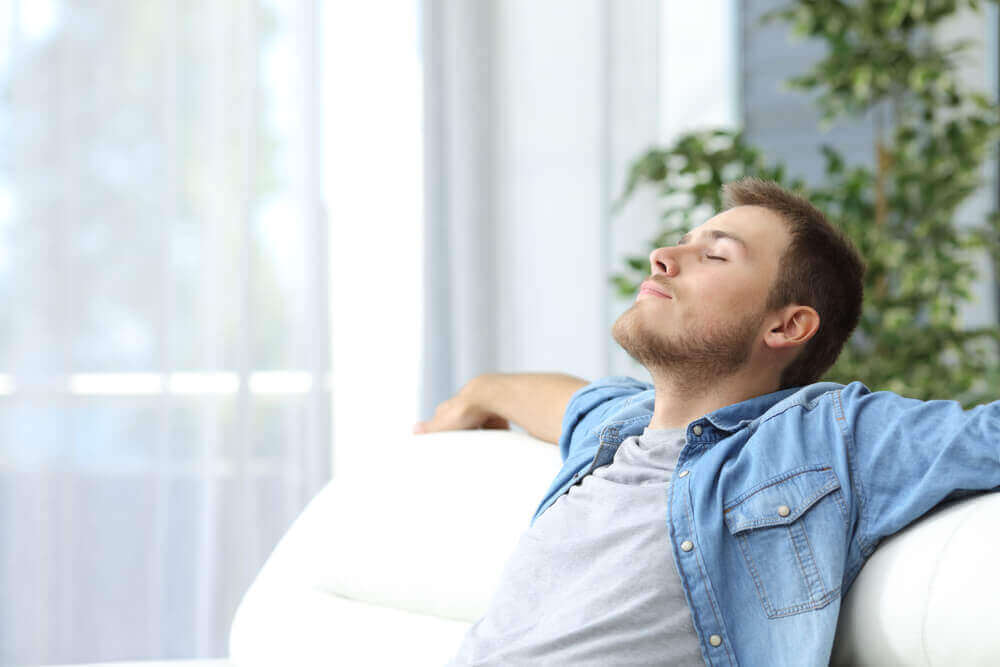Relaxation Techniques During the Lockdown


Written and verified by the doctor Leonardo Biolatto
These days, fear and anxiety have taken over a large part of the population due to the coronavirus pandemic. Fortunately, relaxation techniques can be very useful for moments of crisis like these.
While it’s true that each person has different ways of reacting to difficult situations, in general, stress, uncertainty and other emotions that affect mental health tend to increase. For this reason, it’s a good idea to get to know some relaxation activities to help you. Here are some options.
Relaxation techniques for moments of crisis: Four options
The Centers for Disease Control and Prevention warns that both children and adults will be experiencing emotions that they don’t know how to manage due to the outbreak of COVID-19. It’s a stressful situation that causes changes in sleep patterns, problems with concentration, and excessive worry.
In fact, for many, it’s a cause of panic and can trigger other problems unrelated to the virus, such as depression and alterations in blood pressure, among others. For this reason, you need to look out for your mental health and turn to relaxation techniques for these times of crisis.
Why not practice them with the whole family?
1. Progressive muscle relaxation

One of the most complete relaxation techniques for moments of crisis that we can find is progressive muscle relaxation. According to an article in the Michigan Medicine Health Library, this method helps reduce stress and anxiety. It even promotes the relief of physical symptoms such as muscle tension.
Among other things, it also helps to relax the body and mind if you’re having difficulty sleeping. This way, it can help you get the rest that your body really needs. The method can be used with the help of relaxing sounds or in complete silence. Let’s see how it’s done.
- First of all, choose a quiet place in the house where you can lie down on your back and stretch out comfortably.
- The first phase consists of contracting and relaxing the muscles from head to toe. Start with the face, neck, and shoulders. Try to tense or tighten them, but without causing yourself any pain. Hold them for four to 10 seconds. Then, while continuing to breathe slowly and deeply, relax them for 10 or 20 seconds.
- Then move on to the next muscle group, your arms and hands, and repeat the exercise. The idea is to follow the same process in your legs, back, thorax, abdomen, and waist.
- It’s important to try to observe the difference in how the muscles tighten, and how they feel as the exercise goes on.
Read also: Jacobson’s Progressive Muscle Relaxation
2. Yoga and Pilates
Yoga and Pilates have one thing in common: both disciplines combine physical and breathing exercises, which can help to relax us. Research published in the Journal of Exercise Rehabilitation supports the physical and mental benefits of these techniques.
Among other things, they have important benefits in times of crisis such as the one we are currently experiencing. They’re a form of physical activity and, therefore, diminish the effects of sedentarism.
Yoga has many styles and levels of intensity. The ideal way to practice it is to start with easy postures while slowly increasing resistance. We recommend that you seek guidance on how to do the postures correctly, as bad movements can be counterproductive.
Pilates, on the other hand, involves physical and mental training in which you work on movements in combination with breathing and awareness exercises. Some mobile applications and online videos can help you practice.
3. Positive visualization for moments of crisis

In times of crisis, it’s often difficult to stay positive and optimistic. However, there are techniques such as positive visualization that help counteract these overwhelming and negative thoughts. This form of relaxation is a variation of traditional meditation.
A report published by the Journal of Evidence-Based Complementary & Alternative Medicine found that practicing them can help improve mood, fatigue, and the quality of life in patients with multiple sclerosis. Because of that, experts believe that they also have similar effects in other challenging situations.
It consists of visually recreating situations that we would like to experience or remembering happy times from the past, focusing, at the same time, on the smell, touch, and sounds of the things we visualize. As with other forms of meditation, it’s best to do this in a quiet place away from distractions.
Discover: 7 Kinds of Meditation and Their Benefits
4. Drawing mandalas
Drawing and coloring mandalas is a relaxation technique that can also be used as a hobby in times of lockdown. In Hindu and Buddhist culture, these designs symbolize the universe. Furthermore, they’re considered a good way to enter into meditation or full consciousness.
The word “mandala” means “sacred circle”. A study published in the Inonu University Journal of the Faculty of Education (INUJFE) emphasizes its benefits for tackling anxiety. It even suggests that they can help to relieve nervousness.
Are there any other relaxation techniques for times of crisis?
Absolutely! In addition to the techniques we’ve discussed, there are a wide variety of other relaxation exercises that can help you to maintain your emotional balance in times of crisis. Diaphragmatic breathing, mindfulness, mantras, and tai chi are other interesting examples.
In addition to this, it’s a good idea to maintain healthy habits such as healthy eating and physical exercise. Also, whenever possible, it’s important to spend time with your family and maintain good communication with loved ones who aren’t around. All of this can help your mental health in difficult situations.
All cited sources were thoroughly reviewed by our team to ensure their quality, reliability, currency, and validity. The bibliography of this article was considered reliable and of academic or scientific accuracy.
-
Worthen M, Cash E. Stress Management. [Updated 2019 Jun 18]. In: StatPearls [Internet]. Treasure Island (FL): StatPearls Publishing; 2020 Jan-. Available from: https://www.ncbi.nlm.nih.gov/books/NBK513300/
- Norelli SK, Krepps JM. Relaxation Techniques. [Updated 2020 Feb 13]. In: StatPearls [Internet]. Treasure Island (FL): StatPearls Publishing; 2020 Jan-. Available from: https://www.ncbi.nlm.nih.gov/books/NBK513238/
- Staff, H. (June 28, 2018). Stress Management: Doing Progressive Muscle Relaxation. Michigan Medicine. University of Michigan. Accessed on March 26, 2020 from https://www.uofmhealth.org/health-library/uz2225
- Lim EJ, Park JE. The effects of Pilates and yoga participant’s on engagement in functional movement and individual health level. J Exerc Rehabil. 2019;15(4):553–559. Published 2019 Aug 28. doi:10.12965/jer.1938280.140
- Case LK, Jackson P, Kinkel R, Mills PJ. Guided Imagery Improves Mood, Fatigue, and Quality of Life in Individuals With Multiple Sclerosis: An Exploratory Efficacy Trial of Healing Light Guided Imagery. J Evid Based Integr Med. 2018;23:2515690X17748744. doi:10.1177/2515690X17748744
- Campenni, C. E., & Hartman, A. (2020). The Effects of Completing Mandalas on Mood, Anxiety, and State Mindfulness. Art Therapy, 37(1), 25–33. https://doi.org/10.1080/07421656.2019.1669980
This text is provided for informational purposes only and does not replace consultation with a professional. If in doubt, consult your specialist.








